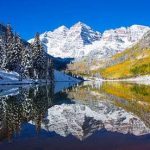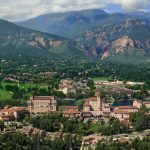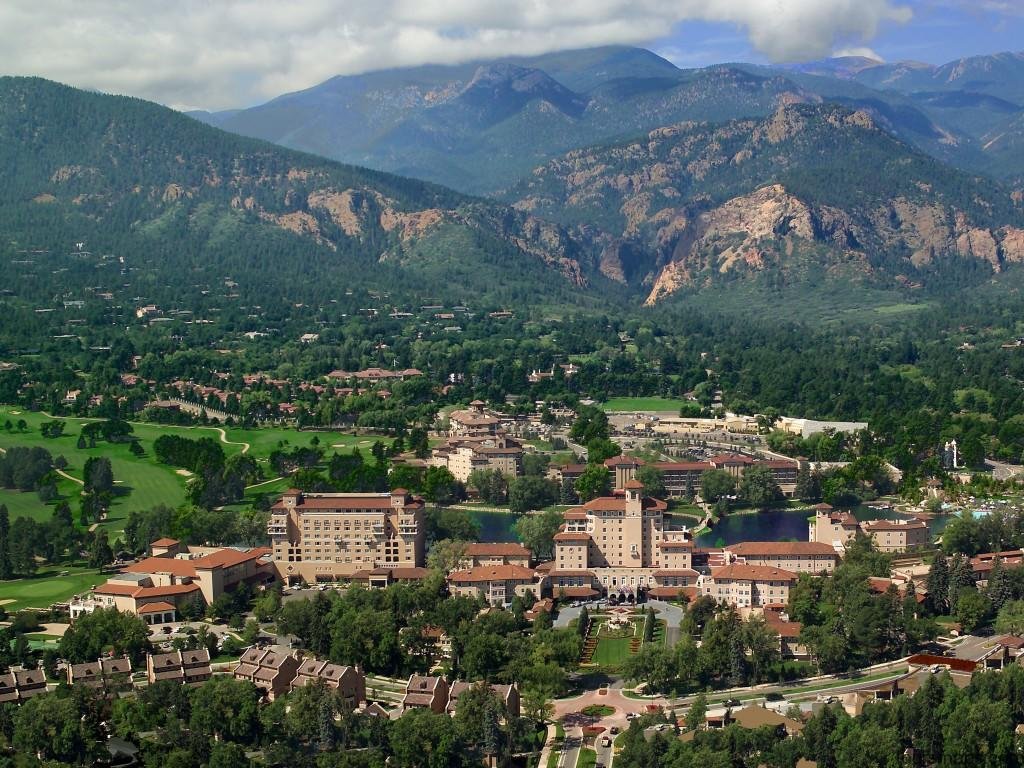1776 Spanish priests Francisco Atanasio Dominguez and Silvestre Velez de Escalante, along with eight other men en route to California lead an expedition through western Colorado, traversing through the San Juan Mountains of Colorado.
1779 New Mexican Governor Don Juan Bautista de Anza, along with 573 men, sets out to attack Comanche Indians, traveling over Poncha Pass, through South Park, and over the Front Range to Colorado’s eastern foothills.
1786 Governor Anza negotiates peace treaty between the Comanches and the Utes.
1787 Governor Anza selects site near present-day Pueblo to begin first (and last) Spanish settlement in the area; it eventually fails.
1821 Mexico wins independence from Spain.
1822 Mexico opens trade with foreign nations. Santa Fe Trail links the Mexican southwest with St. Louis, cutting through southeastern Colorado.
1833 Bent’s Fort is constructed on the northern bank of the Arkansas River, between present-day La Junta and Las Animas. It later becomes an important economic, social, and cultural meeting place along the Santa Fe Trail for Anglos, Mexicans, and Native Americans.
Mexican government issues the Conejos Land Grant, which sits in the southwestern part of the San Luis Valley and includes today’s town of Alamosa. This same year, 80 Mexican families attempt to settle an area of the Conejos Grant, but are chased back to Abiquiu, New Mexico, by raiding Navajo Indians.
1842 El Pueblo (or Fort Pueblo), a small village, is founded at the confluence of Fountain Creek and the Arkansas River. One of the founders is a Latina from Taos, Teresita Sandoval; married to an American man, she challenges many of the gender attitudes of the day. The small village of El Pueblo is later home to mountaineers and their Latina wives from New Mexico. This multi-racial trading post is a center of trade between whites, Latinos, and Indians. This later becomes Pueblo, Colorado, a city with a long history of Latino settlement and civil rights activism.
1843 Governor Manuel Armijo of New Mexico grants the one million-acre Sangre de Cristo Land Grant to two naturalized Mexican citizens. About three-fourths of the grant sits in what later becomes the state of Colorado, and would become the most contested piece of land in the state’s history.
1846 War breaks out between the United States and Mexico 1848 The Treaty of Guadalupe Hidalgo ends the Mexican-American War. Mexico cedes 529,017 square miles to the United States for $15 million, including southern Colorado. Seventy-five thousand Spanish-speaking inhabitants many in Colorado become U.S. citizens. The treaty guarantees the civil, political, and land rights of these new citizens.
1849 Latino settlers make first attempt to settle Sangre de Cristo land grant, near present-day San Luis, without the permission of grant owner Carlos Beaubien. This settlement fails. Settlements may have existed as early as 1847, on areas of the grant lands. Two permanent settlements may pre-date San Luis: Old San Acacio in 1850 and Garcia in 1849. Carlos Beaubien brings Spanish-surnamed settlers to found the first permanent settlement at San Luis, Colorado Colorado’s Oldest Town promising them 50-100 varas of private land, as well as access to thousands of acres of mountain land. These communal land rights would become the basis for a lengthy lawsuit in the late twentieth century.
San Luis People’s Ditch claims the earliest water rights in Colorado under the doctrine of prior appropriation. Today, the San Luis community still operates an intricate acequia irrigation system, which relies on snow melt from the mountains to irrigate their lowland farms.
Latino settlers establish the Our Lady of Guadalupe Catholic Church in Conejos. It is the first church structure in what would become the state of Colorado.
Rise of profitable sheep industry in Spanish American villages on the old Mexican land grants.
United States Congress validates the Sangre de Cristo Grant, essentially recognizing Carlos Beaubien’s promises to the Latino residents on the grant’s lands.
Colorado Photo Gallery
Maybe You Like Them Too
- The Best Cities To Visit in The World
- World’s 10 Best Places To Visit
- Coolest Countries in the World to Visit
- Travel to Santorini, Greece
- Map of Barbados – Holiday in Barbados




